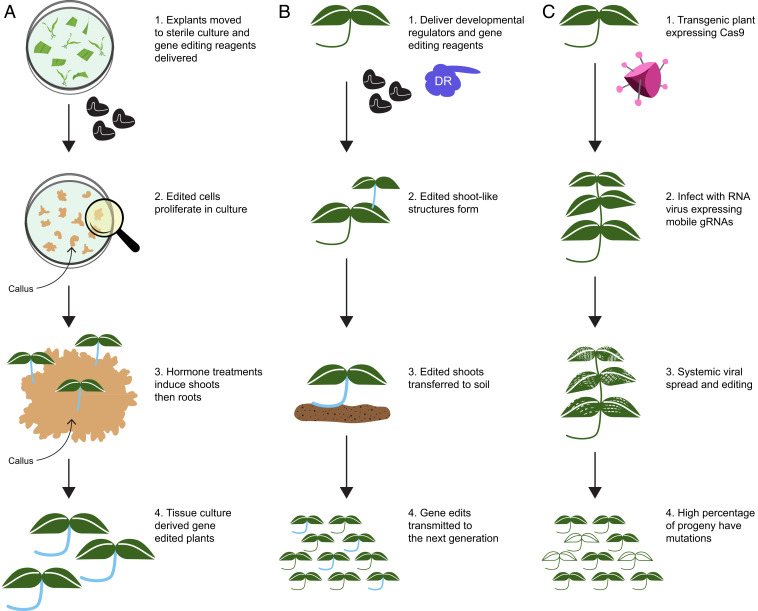Fig. 1.
Approaches for creating genetic variation in plants. (A) Gene editing through tissue culture. Most gene-edited plants are produced through tissue culture. Explants (leaf tissue, cotyledons, immature embryos) are sterilized and placed on medium. Gene-editing reagents are then delivered to the somatic cells; edited cells are allowed to proliferate. Addition of plant hormones induces first shoots and then roots, resulting in the edited plant. (B) Gene editing through de novo meristem induction. A seedling is treated with an Agrobacterium strain that delivers gene-editing reagents and developmental regulators. The latter promote the induction of a meristem from edited somatic cells. The meristem ultimately forms a shoot, which is excised, and roots are induced. Progeny of the plant are characterized for mutations of interest. (C) Gene editing with RNA viruses. Because RNA viruses have limited cargo capacity (typically <1 kb), a transgenic plant is created that expresses Cas9 (or a base or prime editor). The plant is infected with viruses that express sgRNAs as they spread throughout the plant. The sgRNAs are augmented to carry sequences that promote movement into the germ line. Infected plants are grown to maturity and seed harvested. Mutant progeny are characterized to identify those with mutations of interest.

